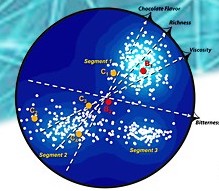
R Training
November 8th at the Greenbrier in white Sulphur Springs, wV and also live-streamed virtually
With advances in computer and data science and the enormous opportunity to share software applications, one statistical software application has stood out as a real game-changer. That software tool is called R. R is an open-source resource that provides access to tools by some of the greatest minds in statistics and data science. These tools include all the basic statistical methodologies but also cutting-edge methods that are only now developing in academic and industrial centers around the world. Learning how to use R effectively creates in the user enormous potential to approach routine and advanced tasks with ease.
In this course, you will:
- Learn what R is and how you can make use of it in your daily work
- Use R Studio to write and manage scripts
- Develop facility with the most useful commands and learn how R is structured
- Import data from a wide variety of sources and learn how toclean and manipulate it
- Write your own functions and export results in graphical and numerical form
- Manage multiple projects

Drivers of Liking – Principles and application
November 9-11 at the Greenbrier in white Sulphur Springs, wV and also live-streamed virtually
Marrying hedonic data with sensory descriptive and analytical information is necessary to understand what drives consumer liking. Many analytical options have been available over the years, but they often will not result in the same conclusions. One analysis might find sweetness to be an attribute driving liking, while another might not. One technique might uncover clear population segmentation, while another might not. How can you choose the most suitable approach? What are each approach’s underlying analytical assumptions and how likely are they to deliver trustworthy results and insights? In this course will review commonly used techniques to understand why consumers like some products and dislike others and identify the strengths and weaknesses of each technique.
We will introduce Landscape Segmentation Analysis® (LSA) which is a tool specifically developed to link liking to possible explanatory variables such as sensory and analytical inputs for multi- ple consumer segments.
Since reliable insights cannot be learned without reliable data, we will also describe experimental approaches that maximize data quality when selecting test products and generating sample presentation orders.
In this course, you will:
- Learn how to select optimal sets of products for a Drivers of Liking® project and generate presentation orders that minimize common experimental biases
- Compare different liking models and understand why they might not always reach the same conclusions, and learn how to select the most suitable approach
- Construct maps with products and consumer ideal points and identify population segmentation
- Uncover a category’s drivers of liking using descriptive and analytical data
- Learn how to combine different analytical tools such as LSA and conjoint analysis or decision trees for deeper insights
- Use mapping results to improve existing products
- Conduct product portfolio optimization
Registration
R training only
in-person or virtually……………. $495
Drivers of liking:
In-person attendance at the Greenbrier … $1,890*
Livestreamattendancevirtually …………..$1,575*
*Includes complimentary R Training on the first day. For academic and multiple registration discounts, contact us before registering.



